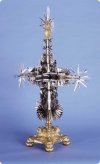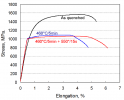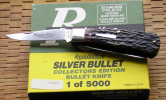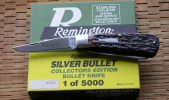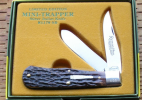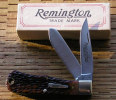I have a collection of mint folding pocket knives that I keep permanently in a display case. The blades are all partially open. I wonder if this might put some stress on the various metal components and warp them over time in that unusual position. Should I display the knives closed or all the way open?
I thought of that problem because I have an Old Timer with a liner lock that I carried for several decades. One day, the liner stopped springing out enough to lock the blade. I don't know why it happened and could only guess that it just wore out over time and lost its "springyness."
I thought of that problem because I have an Old Timer with a liner lock that I carried for several decades. One day, the liner stopped springing out enough to lock the blade. I don't know why it happened and could only guess that it just wore out over time and lost its "springyness."

